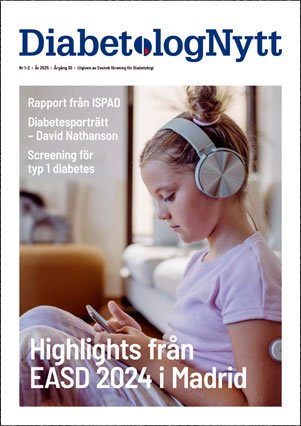SAN DIEGO — New data from the Trial to Evaluate Cardiovascular and Other Long-term Outcomes With Semaglutide in Subjects With Type 2 Diabetes (SUSTAIN-6), a 1 weekly given GLP-analog, provide a plausible explanation for the worsening retinopathy seen among patients taking the investigational glucagonlike-peptide 1 (GLP-1) agonist semaglutide (Novo Nordisk), suggesting that the problem is likely due to rapid glucose-lowering in already-vulnerable patients, rather than a drug-specific effect.
The findings were presented today here at the American Diabetes Association (ADA) 2017 Scientific Sessions by Dr Tina Vilsbøll, clinical manager at the Steno Diabetes Center, Copenhagen, Denmark.
SUSTAIN-6 was the second major cardiovascular-outcomes trial to show positive results for a GLP-1 agonist in type 2 diabetes patients at high risk of cardiovascular disease: those treated with semaglutide — a once-weekly injectable — had a significant 26% lower risk of the primary cardiovascular outcome over 2 years compared with those receiving placebo.
However, there was a concern about higher rates of retinopathy complications in those receiving semaglutide: vitreous hemorrhage, blindness, or conditions requiring treatment with an intravitreal agent or photocoagulation were significantly higher among those receiving semaglutide, occurring in 3% of patients on the active drug compared with 1.8% of the placebo group, a 76% increase (P = .02).
Here in San Diego, Dr Vilsbøll presented further analysis of the trial, suggesting three possible reasons for the imbalance:
1) the patients with the retinopathy complications had worse control at baseline and were more likely to have preexisting retinopathy than the overall study population. In addition,
2) retinopathy complications were more likely in patients who had rapid HbA1c lowering during the trial regardless of treatment arm, a well-known phenomenon that has been reported with insulin as well.
Asked to comment, session moderator Silvio E Inzucchi, MD, medical director of the Yale Diabetes Center, New Haven, Connecticut, told Medscape Medical News, ”I was reasonably convinced that it wasn’t a deleterious effect of semaglutide, but that it was related to a robust A1c reduction, and it was seen in patients with preexisting retinopathy and out-of-control diabetes.”
He pointed out that a nonsignificant elevation in retinopathy (hazard ratio, 1.15; P = .33) was also seen with the GLP-1 agonist liraglutide (Victoza, Novo Nordisk) in the Liraglutide Effect and Action in Diabetes: Evaluation of Cardiovascular Outcome Results—A Long Term Evaluation (LEADER) trial.
”The nuance here is that semaglutide had a stronger A1c effect than liraglutide. If you’re going to see it with a drug, it’s probably a drug that drops the A1c more robustly than was seen in LEADER with liraglutide.”
Clinically, he said the findings suggest caution when using any potent glucose-lowering drug in similarly vulnerable patients.
”We might want to start with a lower dose, especially for patients with preexisting retinopathy, and particularly if it required intravitreal therapy or laser photocoagulation.
”I think in those patients if you’re going to use these drugs you need to go very slowly, instead of rapidly increasing the dose as we typically do. The data were relatively convincing that the patients with the larger treatment effect in terms of A1c were the ones most at risk.”
Effect Seen Only in Those With Retinopathy at Baseline
When Dr Vilsbøll removed the 79 patients with confirmed retinopathy events at baseline from the total 3297 study patients, retinopathy rates among those without the complications at baseline were low and comparable to those seen in the placebo group.
Those 79 had a diabetes duration of 17.5 years, compared with13.9 years for the overall study population. Their mean HbA1c was 9.4%, vs 8.7% overall. They were also more likely to be treated with insulin, 75.9% vs 58.0%.
Moreover, 83.5% of the 79 with retinopathy complications had a medical history of diabetic retinopathy compared with just 29.4% of the overall study population and were also more likely to have had proliferative retinopathy (29.1% vs 6.1%) and to have had treatment with laser therapy or intravitreal agents (17.7% vs 3.4%).
”So they were different already at baseline,” she commented.
And when examined by degree of HbA1c reduction at week 16, the rate of retinopathy events was significantly higher the greater the drop, with the highest rates among those with more than a 1.5-percentage-point drop and the lowest with reductions of less than 0.5 in both the semaglutide and placebo groups.
”So, it seems like patients with a very pronounced effect had events,” Dr Vilsbøll said.
The relationship between rapid glucose-lowering and retinopathy worsening has been on the label for insulin products for decades, she noted.
”When initiating a highly effective treatment such as semaglutide, similar guidance should be given to vulnerable patients,” she concluded.
American Diabetes Association 2017 Scientific Sessions. June 9, 2017; San Diego, California. Presentation 1-AC-SY09
From www.medscape.com
Nyhetsinfo
www red DiabetologNytt


